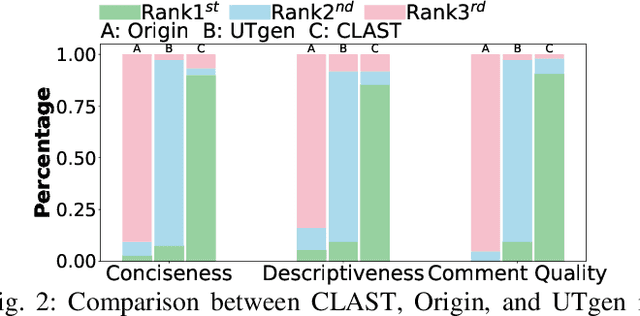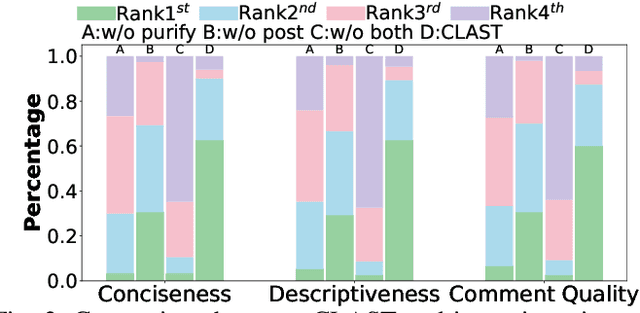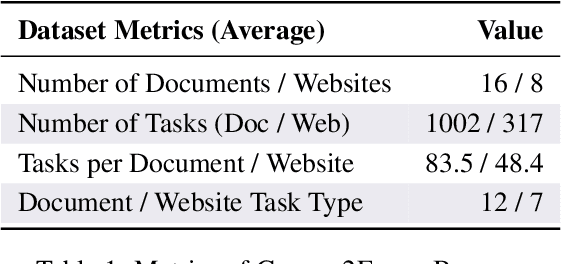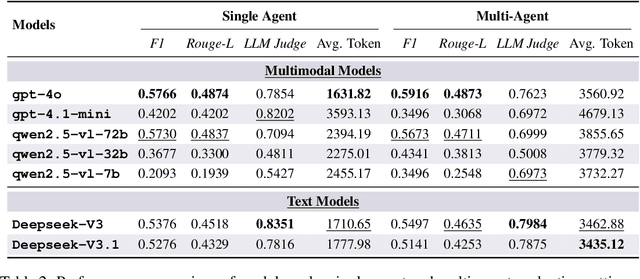Ziqi Wang
TrackTeller: Temporal Multimodal 3D Grounding for Behavior-Dependent Object References
Dec 25, 2025Abstract:Understanding natural-language references to objects in dynamic 3D driving scenes is essential for interactive autonomous systems. In practice, many referring expressions describe targets through recent motion or short-term interactions, which cannot be resolved from static appearance or geometry alone. We study temporal language-based 3D grounding, where the objective is to identify the referred object in the current frame by leveraging multi-frame observations. We propose TrackTeller, a temporal multimodal grounding framework that integrates LiDAR-image fusion, language-conditioned decoding, and temporal reasoning in a unified architecture. TrackTeller constructs a shared UniScene representation aligned with textual semantics, generates language-aware 3D proposals, and refines grounding decisions using motion history and short-term dynamics. Experiments on the NuPrompt benchmark demonstrate that TrackTeller consistently improves language-grounded tracking performance, outperforming strong baselines with a 70% relative improvement in Average Multi-Object Tracking Accuracy and a 3.15-3.4 times reduction in False Alarm Frequency.
AIAuditTrack: A Framework for AI Security system
Dec 16, 2025Abstract:The rapid expansion of AI-driven applications powered by large language models has led to a surge in AI interaction data, raising urgent challenges in security, accountability, and risk traceability. This paper presents AiAuditTrack (AAT), a blockchain-based framework for AI usage traffic recording and governance. AAT leverages decentralized identity (DID) and verifiable credentials (VC) to establish trusted and identifiable AI entities, and records inter-entity interaction trajectories on-chain to enable cross-system supervision and auditing. AI entities are modeled as nodes in a dynamic interaction graph, where edges represent time-specific behavioral trajectories. Based on this model, a risk diffusion algorithm is proposed to trace the origin of risky behaviors and propagate early warnings across involved entities. System performance is evaluated using blockchain Transactions Per Second (TPS) metrics, demonstrating the feasibility and stability of AAT under large-scale interaction recording. AAT provides a scalable and verifiable solution for AI auditing, risk management, and responsibility attribution in complex multi-agent environments.
Clarifying Semantics of In-Context Examples for Unit Test Generation
Oct 02, 2025



Abstract:Recent advances in large language models (LLMs) have enabled promising performance in unit test generation through in-context learning (ICL). However, the quality of in-context examples significantly influences the effectiveness of generated tests-poorly structured or semantically unclear test examples often lead to suboptimal outputs. In this paper, we propose CLAST, a novel technique that systematically refines unit tests to improve their semantic clarity, thereby enhancing their utility as in-context examples. The approach decomposes complex tests into logically clearer ones and improves semantic clarity through a combination of program analysis and LLM-based rewriting. We evaluated CLAST on four open-source and three industrial projects. The results demonstrate that CLAST largely outperforms UTgen, the state-of-the-art refinement technique, in both preserving test effectiveness and enhancing semantic clarity. Specifically, CLAST fully retains the original effectiveness of unit tests, while UTgen reduces compilation success rate (CSR), pass rate (PR), test coverage (Cov), and mutation score (MS) by an average of 12.90%, 35.82%, 4.65%, and 5.07%, respectively. Over 85.33% of participants in our user study preferred the semantic clarity of CLAST-refined tests. Notably, incorporating CLAST-refined tests as examples effectively improves ICL-based unit test generation approaches such as RAGGen and TELPA, resulting in an average increase of 25.97% in CSR, 28.22% in PR, and 45.99% in Cov for generated tests, compared to incorporating UTgen-refined tests. The insights from the follow-up user study not only reinforce CLAST's potential impact in software testing practice but also illuminate avenues for future research.
Graph2Eval: Automatic Multimodal Task Generation for Agents via Knowledge Graphs
Oct 01, 2025



Abstract:As multimodal LLM-driven agents continue to advance in autonomy and generalization, evaluation based on static datasets can no longer adequately assess their true capabilities in dynamic environments and diverse tasks. Existing LLM-based synthetic data methods are largely designed for LLM training and evaluation, and thus cannot be directly applied to agent tasks that require tool use and interactive capabilities. While recent studies have explored automatic agent task generation with LLMs, most efforts remain limited to text or image analysis, without systematically modeling multi-step interactions in web environments. To address these challenges, we propose Graph2Eval, a knowledge graph-based framework that automatically generates both multimodal document comprehension tasks and web interaction tasks, enabling comprehensive evaluation of agents' reasoning, collaboration, and interactive capabilities. In our approach, knowledge graphs constructed from multi-source external data serve as the task space, where we translate semantic relations into structured multimodal tasks using subgraph sampling, task templates, and meta-paths. A multi-stage filtering pipeline based on node reachability, LLM scoring, and similarity analysis is applied to guarantee the quality and executability of the generated tasks. Furthermore, Graph2Eval supports end-to-end evaluation of multiple agent types (Single-Agent, Multi-Agent, Web Agent) and measures reasoning, collaboration, and interaction capabilities. We instantiate the framework with Graph2Eval-Bench, a curated dataset of 1,319 tasks spanning document comprehension and web interaction scenarios. Experiments show that Graph2Eval efficiently generates tasks that differentiate agent and model performance, revealing gaps in reasoning, collaboration, and web interaction across different settings and offering a new perspective for agent evaluation.
A2R: An Asymmetric Two-Stage Reasoning Framework for Parallel Reasoning
Sep 26, 2025



Abstract:Recent Large Reasoning Models have achieved significant improvements in complex task-solving capabilities by allocating more computation at the inference stage with a "thinking longer" paradigm. Even as the foundational reasoning capabilities of models advance rapidly, the persistent gap between a model's performance in a single attempt and its latent potential, often revealed only across multiple solution paths, starkly highlights the disparity between its realized and inherent capabilities. To address this, we present A2R, an Asymmetric Two-Stage Reasoning framework designed to explicitly bridge the gap between a model's potential and its actual performance. In this framework, an "explorer" model first generates potential solutions in parallel through repeated sampling. Subsequently,a "synthesizer" model integrates these references for a more refined, second stage of reasoning. This two-stage process allows computation to be scaled orthogonally to existing sequential methods. Our work makes two key innovations: First, we present A2R as a plug-and-play parallel reasoning framework that explicitly enhances a model's capabilities on complex questions. For example, using our framework, the Qwen3-8B-distill model achieves a 75% performance improvement compared to its self-consistency baseline. Second, through a systematic analysis of the explorer and synthesizer roles, we identify an effective asymmetric scaling paradigm. This insight leads to A2R-Efficient, a "small-to-big" variant that combines a Qwen3-4B explorer with a Qwen3-8B synthesizer. This configuration surpasses the average performance of a monolithic Qwen3-32B model at a nearly 30% lower cost. Collectively, these results show that A2R is not only a performance-boosting framework but also an efficient and practical solution for real-world applications.
Design and Control of a Perching Drone Inspired by the Prey-Capturing Mechanism of Venus Flytrap
Sep 16, 2025



Abstract:The endurance and energy efficiency of drones remain critical challenges in their design and operation. To extend mission duration, numerous studies explored perching mechanisms that enable drones to conserve energy by temporarily suspending flight. This paper presents a new perching drone that utilizes an active flexible perching mechanism inspired by the rapid predation mechanism of the Venus flytrap, achieving perching in less than 100 ms. The proposed system is designed for high-speed adaptability to the perching targets. The overall drone design is outlined, followed by the development and validation of the biomimetic perching structure. To enhance the system stability, a cascade extended high-gain observer (EHGO) based control method is developed, which can estimate and compensate for the external disturbance in real time. The experimental results demonstrate the adaptability of the perching structure and the superiority of the cascaded EHGO in resisting wind and perching disturbances.
LoRA in LoRA: Towards Parameter-Efficient Architecture Expansion for Continual Visual Instruction Tuning
Aug 08, 2025Abstract:Continual Visual Instruction Tuning (CVIT) enables Multimodal Large Language Models (MLLMs) to incrementally learn new tasks over time. However, this process is challenged by catastrophic forgetting, where performance on previously learned tasks deteriorates as the model adapts to new ones. A common approach to mitigate forgetting is architecture expansion, which introduces task-specific modules to prevent interference. Yet, existing methods often expand entire layers for each task, leading to significant parameter overhead and poor scalability. To overcome these issues, we introduce LoRA in LoRA (LiLoRA), a highly efficient architecture expansion method tailored for CVIT in MLLMs. LiLoRA shares the LoRA matrix A across tasks to reduce redundancy, applies an additional low-rank decomposition to matrix B to minimize task-specific parameters, and incorporates a cosine-regularized stability loss to preserve consistency in shared representations over time. Extensive experiments on a diverse CVIT benchmark show that LiLoRA consistently achieves superior performance in sequential task learning while significantly improving parameter efficiency compared to existing approaches.
Can Mixture-of-Experts Surpass Dense LLMs Under Strictly Equal Resources?
Jun 13, 2025Abstract:Mixture-of-Experts (MoE) language models dramatically expand model capacity and achieve remarkable performance without increasing per-token compute. However, can MoEs surpass dense architectures under strictly equal resource constraints - that is, when the total parameter count, training compute, and data budget are identical? This question remains under-explored despite its significant practical value and potential. In this paper, we propose a novel perspective and methodological framework to study this question thoroughly. First, we comprehensively investigate the architecture of MoEs and achieve an optimal model design that maximizes the performance. Based on this, we subsequently find that an MoE model with activation rate in an optimal region is able to outperform its dense counterpart under the same total parameter, training compute and data resource. More importantly, this optimal region remains consistent across different model sizes. Although additional amount of data turns out to be a trade-off for the enhanced performance, we show that this can be resolved via reusing data. We validate our findings through extensive experiments, training nearly 200 language models at 2B scale and over 50 at 7B scale, cumulatively processing 50 trillion tokens. All models will be released publicly.
RM-R1: Reward Modeling as Reasoning
May 05, 2025Abstract:Reward modeling is essential for aligning large language models (LLMs) with human preferences, especially through reinforcement learning from human feedback (RLHF). To provide accurate reward signals, a reward model (RM) should stimulate deep thinking and conduct interpretable reasoning before assigning a score or a judgment. However, existing RMs either produce opaque scalar scores or directly generate the prediction of a preferred answer, making them struggle to integrate natural language critiques, thus lacking interpretability. Inspired by recent advances of long chain-of-thought (CoT) on reasoning-intensive tasks, we hypothesize and validate that integrating reasoning capabilities into reward modeling significantly enhances RM's interpretability and performance. In this work, we introduce a new class of generative reward models -- Reasoning Reward Models (ReasRMs) -- which formulate reward modeling as a reasoning task. We propose a reasoning-oriented training pipeline and train a family of ReasRMs, RM-R1. The training consists of two key stages: (1) distillation of high-quality reasoning chains and (2) reinforcement learning with verifiable rewards. RM-R1 improves LLM rollouts by self-generating reasoning traces or chat-specific rubrics and evaluating candidate responses against them. Empirically, our models achieve state-of-the-art or near state-of-the-art performance of generative RMs across multiple comprehensive reward model benchmarks, outperforming much larger open-weight models (e.g., Llama3.1-405B) and proprietary ones (e.g., GPT-4o) by up to 13.8%. Beyond final performance, we perform thorough empirical analysis to understand the key ingredients of successful ReasRM training. To facilitate future research, we release six ReasRM models along with code and data at https://github.com/RM-R1-UIUC/RM-R1.
Embodied Neuromorphic Control Applied on a 7-DOF Robotic Manipulator
Apr 17, 2025



Abstract:The development of artificial intelligence towards real-time interaction with the environment is a key aspect of embodied intelligence and robotics. Inverse dynamics is a fundamental robotics problem, which maps from joint space to torque space of robotic systems. Traditional methods for solving it rely on direct physical modeling of robots which is difficult or even impossible due to nonlinearity and external disturbance. Recently, data-based model-learning algorithms are adopted to address this issue. However, they often require manual parameter tuning and high computational costs. Neuromorphic computing is inherently suitable to process spatiotemporal features in robot motion control at extremely low costs. However, current research is still in its infancy: existing works control only low-degree-of-freedom systems and lack performance quantification and comparison. In this paper, we propose a neuromorphic control framework to control 7 degree-of-freedom robotic manipulators. We use Spiking Neural Network to leverage the spatiotemporal continuity of the motion data to improve control accuracy, and eliminate manual parameters tuning. We validated the algorithm on two robotic platforms, which reduces torque prediction error by at least 60% and performs a target position tracking task successfully. This work advances embodied neuromorphic control by one step forward from proof of concept to applications in complex real-world tasks.
 Add to Chrome
Add to Chrome Add to Firefox
Add to Firefox Add to Edge
Add to Edge